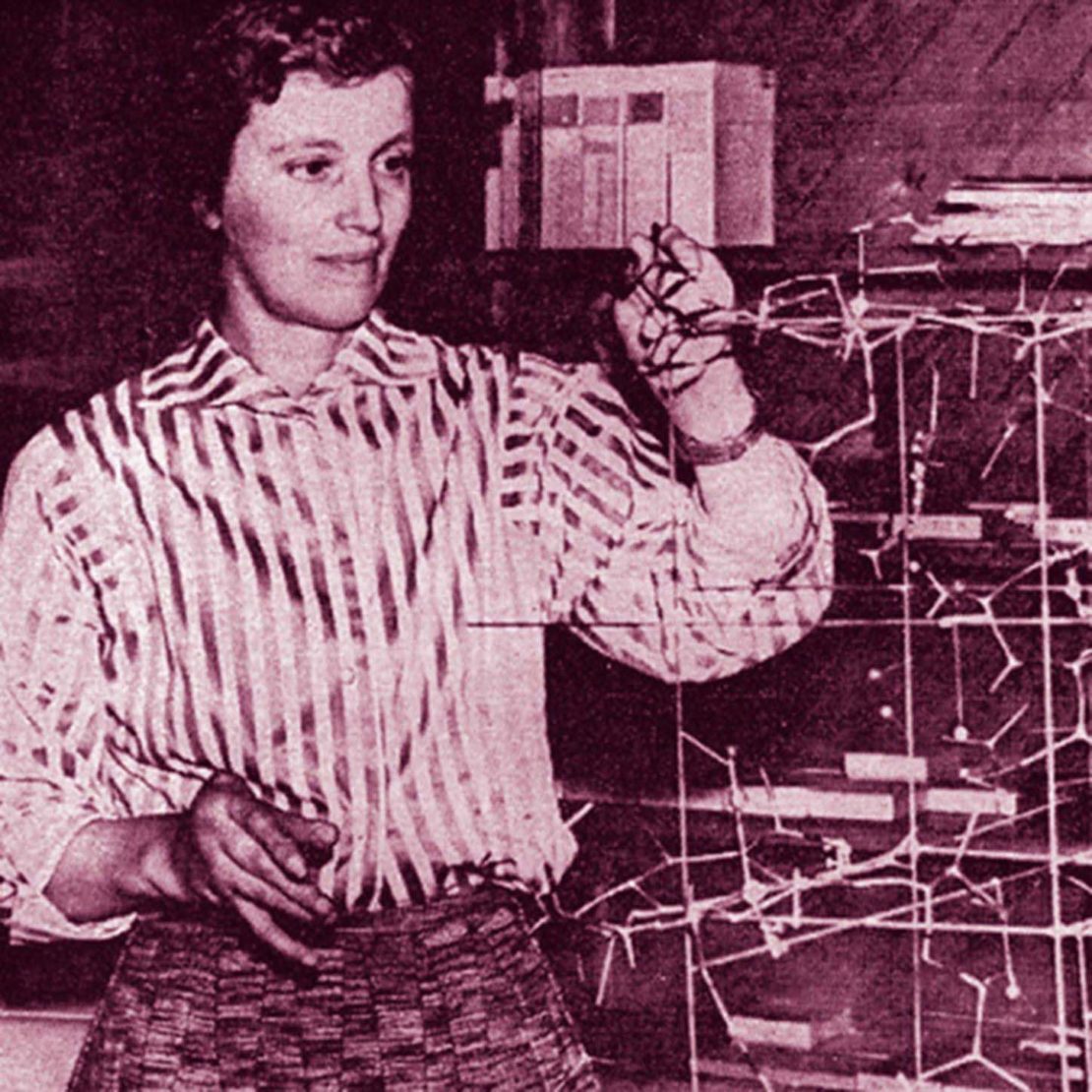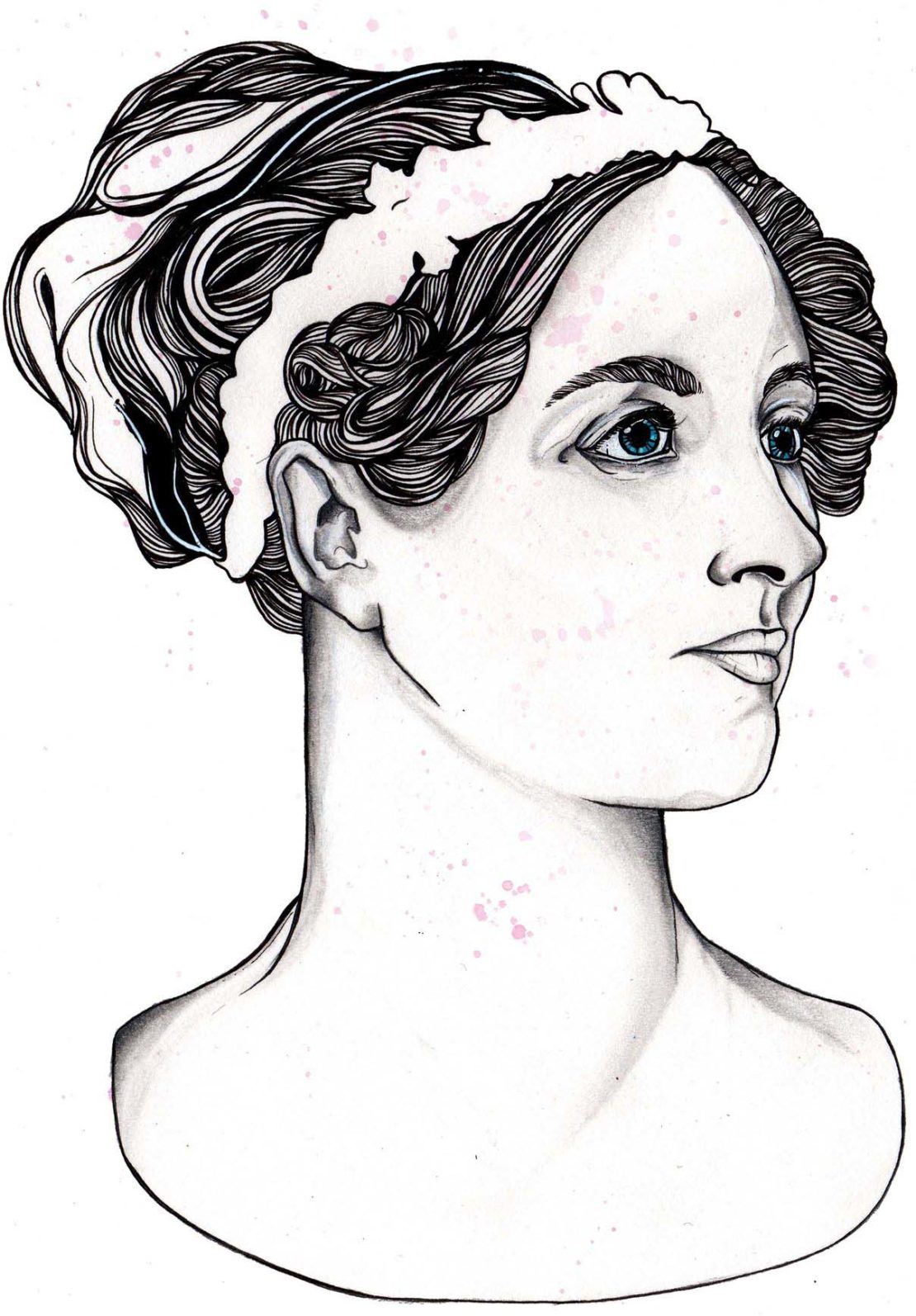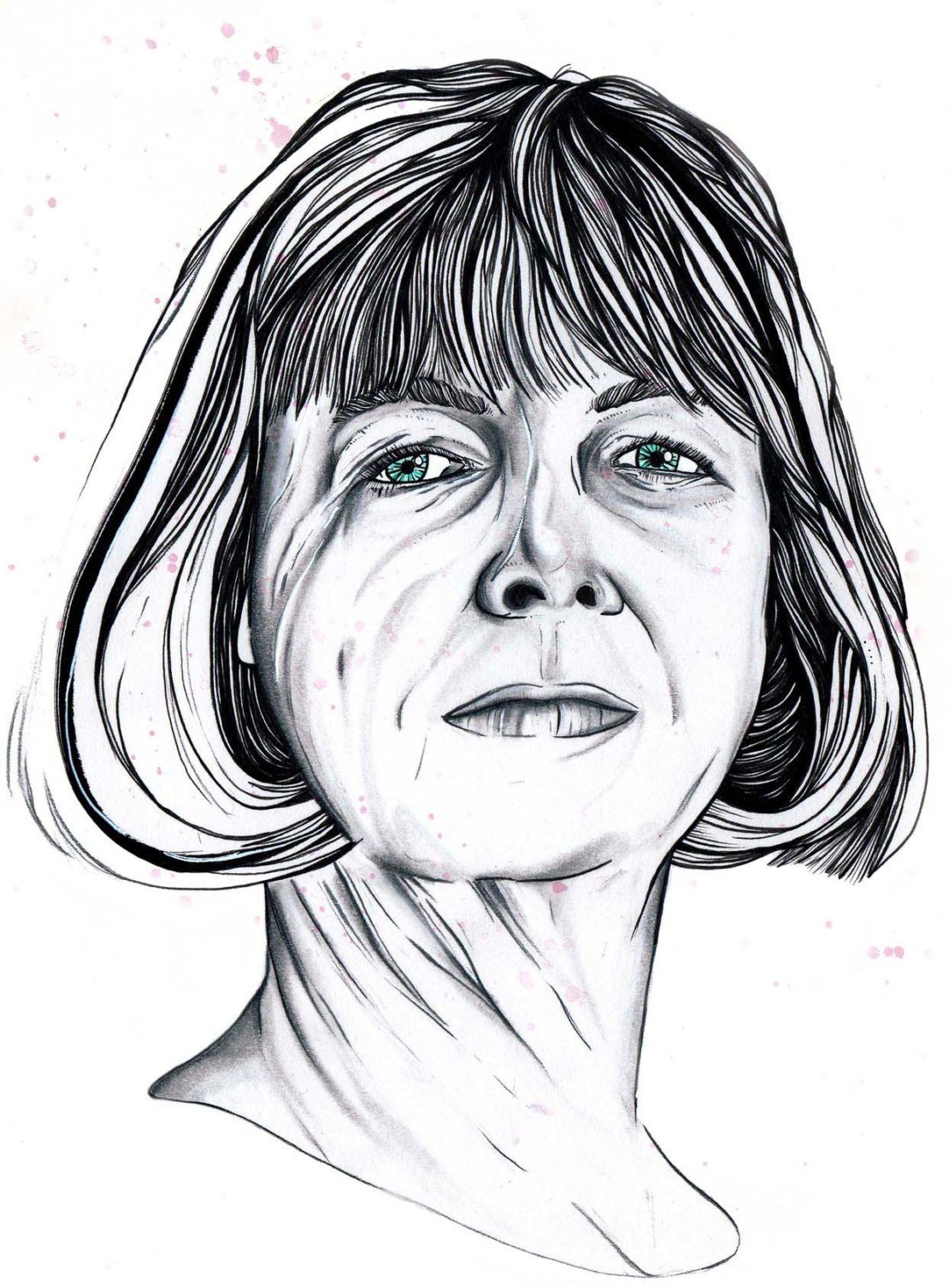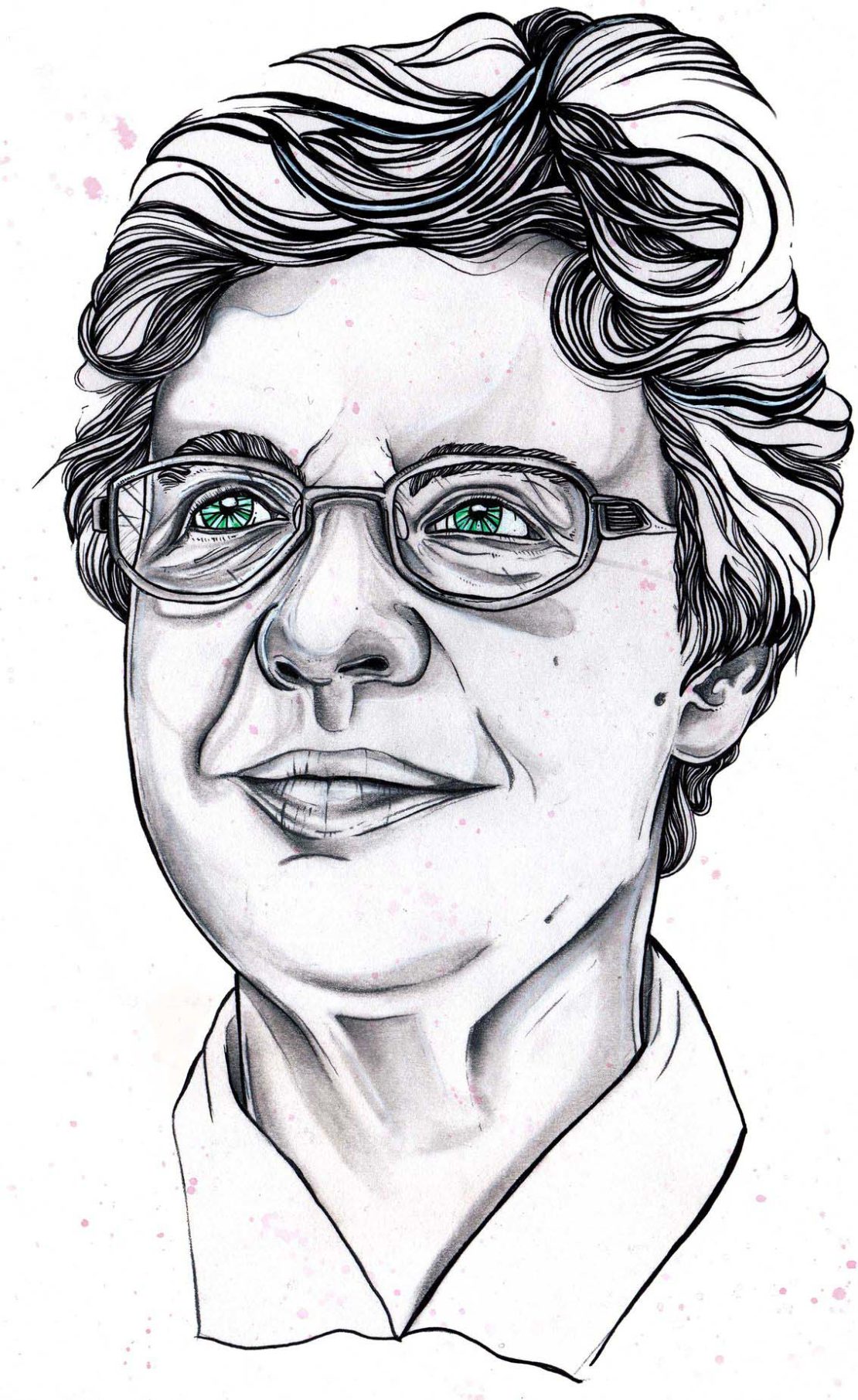
Why does science remain so male-dominated?
It’s mid-October when I travel to Cambridge to interview a number of leading women scientists. Yesterday was Ada Lovelace day, the time we choose to remember the English mathematician who in the 1840s wrote the first computer algorithm; and a day to celebrate the achievements of all women working in science, technology, engineering and maths.
The stories of female scientists and engineers who made a difference in the past are at last being told. Women like Emily Warren Roebling, the first female field engineer, who oversaw the completion of the Brooklyn Bridge in the late 1880s when her civil engineer husband fell ill; and Hedy Lamarr, the Hollywood actress whose frequency-hopping, spread-spectrum invention was an early forerunner of today’s Wi-Fi systems. She and a musician friend designed this novel way to control radio-guided torpedoes during World War II using a signal (controlled by a player-piano mechanism) that made it almost impossible for the enemy to lock onto and send the torpedoes off course.
We’ve also learned a lot, as secrecy has been lifted, about the female code-breakers of Bletchley Park, who helped to end that war. And then there are the "Harvard Computers", dozens of women hired to analyse astronomical data by Edward Pickering, director of the Harvard Observatory from 1877 to 1919.
Known less politely as "Pickering’s Harem", some of these women are credited with notable scientific findings of their own. But historians cite this as a canonical example of the "harem effect": a phenomenon whereby a male scientist employed female subordinates, not only because he could pay them less, but also because they were said to be less threatening than an equal number of bright young men.

These days there’s a great deal of energy being channelled into persuading girls to take science subjects at school; and to stay long enough to make an impact. So is the day-to-day working environment any better for women in science today, and is female representation, especially at senior levels, improving?
Many of the problems faced by girls and women in science were identified decades ago along with the need for positive role models, the advantages of single-sex teaching and the benefits of flexible working patterns. Yet a look at the numbers suggests there’s still much work to be done.
Efforts to raise awareness of the value of science and engineering careers have paid off. The numbers of boys and girls taking subjects such as maths, further maths, chemistry, biology and physics at A-level has increased over the last 10 years.
But attempts to increase the female percentage have been painfully slow. The biggest increase has been in chemistry (up just over nine per cent) and maths and further maths (up nearly eight per cent) since 1985.
Most shockingly, the female percentage of those taking physics A-level has remained stuck – at just over 20 per cent – ever since the mid-80s. Similarly, the figure for biology has also hovered around the 60 per cent mark over the same timeframe. In spite of all the initiatives of recent years to shift this balance, so that female representation in the "hard" physical sciences comes closer to that in the "soft" biological sciences, we’ve failed.
And it matters that we find out why. If girls opt out of physics at A-level they’re shutting down whole swathes of scientific possibilities; limiting their chances of pursuing careers in areas from engineering to the computer games industry, to renewable energy, to teaching and research.
Just as importantly, those professions and scientific subjects are losing this female voice, and its contribution to their futures. We can only guess at what might be missed.
I’m intrigued to know what women working in industry and in academia today would change, if anything, to improve life for those coming behind them. I arrive for my first set of interviews in front of a series of low-rise glass buildings on a science park just south of Cambridge. This is home to a glittering array of science-based companies, shielded from the public gaze by security guards and CCTV.
The words of Dorothy Hodgkin come to mind from a recent radio series, based on her letters. After the Nobel prize ceremony in 1964 in which her work on crystallography was recognised, she’s reported to have said that she would have preferred not to have had such a fuss made about her gender.
"The situation in which I find myself will, I very much hope, not be so uncommon in the future that it will require any comment or special treatment, as more use is made of the many gifts which women share equally with men."
50 years later, Dorothy Hodgkin is still the only female British scientist to have won a Nobel prize. And here I am about to question today’s high-flying female scientists not just about their work, but about their gender.
None of which worries Dr Ruth McKernan overly much; she’s far too pragmatic. Ruth is now senior vice president of Pfizer and chief scientific officer at Neusentis, one of Pfizer’s 10 research centres.
Ruth and I met in the 90s when I was at The Independent newspaper, and she joined the science desk as a British Association media fellow, eager to learn about science journalism. She and I had a fair amount in common. We both attended girls’ schools in south London, both our dads had science/engineering backgrounds and we both went to university in London. Ruth studied biochemistry and pharmacology and I took physics. It turns out that girls are still more likely to stick with science if they have this sort of background: single-sex schooling and a parent as a role model.
Ruth has continued her science writing, with a moving book about her relationship with her scientist father, Billy’s Halo, in 2006. She’s most alive when talking about science, but is thoughtful on why it matters that we examine the reasons behind the poor representation of women in science, especially at leadership level. "It’s not about people having different strengths or skills; it’s more the moral issue of women’s place in society. Why, if you employ 50 per cent men and women, are there not 50 per cent women in senior positions?" she asks me.
Ruth recalls a recent meeting, where she began her talk with what she’d intended as a light-hearted opener, introducing herself first as a woman ("Hello, I’m Ruth and I work for Pfizer"); then as a man ("Hello, I’m head of a unit of 150 people with a budget of $100m, I have 115 published papers, 15 patents and I’ve just been awarded a CBE.")

"A woman in the audience – who could be forgiven for thinking I might have been joking – said, 'Yes but come on, what do you really do?'" What worried Ruth was what that said about the woman’s own self-belief.
Ruth is dismissive of the notion that the "harem effect" might still be at play today, and says she doesn’t recognise the phenomenon at all. "I have a lab run by a woman that is mostly men, and a lab run by a man that is mostly women."
Neusentis is the part of Pfizer that works on pain, sensory disorders and regenerative medicine. They have promising early research on a new treatment for pain, and for a form of blindness called macular degeneration.
Ruth takes me to meet some of her colleagues and show me the labs, past the red London telephone box with mini superman costume hanging inside. "That’s for fun," she says. I’m glad her mischievous streak has remained intact; the last time I saw Ruth in a lab was when she and a friend snuck me into a locked university building one weekend 20 years ago, to check out some human brains.
She explains that the team’s work using stem cells originally derived from embryos, to help to restore sight. She shows me tiny dark blobs growing in a small glass flask. These are retinal pigment epithelium (RPE) cells. "The exciting thing about RPE cells is that they’re black… you can see them growing in clumps. The challenge is to get them to grow one layer thick, uniformly across a surface: that’s massively difficult."
The surgeon on the team has completed safety tests on pigs (their eyes are similar in size to humans’) using patches of cells exactly the same as those which will go into patients. Ruth hopes trials will start next spring.
Perhaps we shouldn’t forget how fast things have changed, and from how poor a beginning. When Ruth and I were at school, in the 70s, it was at least an option for girls to take science subjects. Just 20 years earlier, when Jocelyn Bell Burnell turned up for her first day at secondary school, only the boys would do science, while the girls were shunted off to domestic science instead. Jocelyn’s parents had to make a fuss before she and two other girls were allowed to switch.
Now Professor Dame Jocelyn, she was part of the team that made one of the most important astronomical discoveries of the 20th century: the pulsar, a dense rotating star that emits radio pulses. Bell Burnell was responsible for analysing the group’s radio astronomy data. She spotted the first pulsar signal in amongst the noise, and insisted on trying to explain it.
Her supervisor, Antony Hewish, and her colleague, Martin Ryle, eventually shared the Nobel prize for the discovery in 1974. Bell Burnell was left out, which is widely viewed as a grave omission. To this day, however, Professor Hewish thinks he deserved the recognition, saying in a recent interview that there’s "a difference between skipper and crew".
For Prof Dame Jocelyn it’s "not worth getting het up about." In an interview in 2011 she added a historical note that suggests the Pickering Harem syndrome was still alive and well in the 60s.
"In those days, it was believed that science was done – driven by – great men… and that these men had a fleet of minions under them who did their every bidding, and weren’t expected to think.”
Jocelyn tells me the situation for women in physics is now changing. "When I became a professor of physics circa 1991, I doubled the number of female professors of physics in the UK. Now I believe there are about 40, out of about 650."
Bell Burnell was made the first female president of the Institute of Physics in 2008, and has long championed women in science. Astrophysics departments, she said, are generally more women-friendly than many other parts of physics, and boast a higher percentage of females, especially among the younger cohorts.
And she thinks everyone is beginning to value the benefits of wider participation. "It’s now widely recognised that a diverse research group is usually stronger, more creative and more robust and flexible. Such a group usually copes better in a downturn," she says.
She credits schemes such as the Athena SWAN awards, run by the Equality Challenge Unit, as having a marked impact. These bronze, silver and gold awards recognise and reward steps taken to advance women’s careers in science, technology, engineering, maths and medicine.
Three years ago, the government’s first female Chief Medical Officer, Professor Dame Sally Davies, stunned the world of medical research. She wrote a letter stating that she felt "embarrassed on behalf of our nation" over the lack of women in leadership roles, and that she expected to renew grants only for medical schools holding Athena SWAN silver awards.
"That made everyone, including Cambridge, radically change their attitude and put in resources," explains Professor Jeremy Sanders, the university’s pro-vice-chancellor. For Cambridge this meant a considerable sum: £114m over five years, with renewal due in 2015.
Professor Davies’ letter "electrified the medical research world", Professor Sanders tells me, but it worked. The clinical school at Cambridge gained a silver award in 2013, and the university as a whole was granted a silver award this September: only the fifth such award in the country.
Professor Dame Athene Donald has just completed her stint as the Cam-bridge's Gender Equality Champion. I ask her about Dorothy Hodgkin’s hope that 50 years on from her Nobel prize, the gender issue would no longer be an issue. Might things be any better in another 50 years?
"Well I can always be hopeful, but the reality is that in physics the problem starts so young. We can’t get 50/50 Nobel prize winners until we solve the problem at school."
So is the percentage of women in senior leadership roles any better in industry? At Pfizer UK, for example, this figure stood at 17 per cent in 2005; and today it’s 33 per cent. Dr Sarah Skerratt, who’s been with the company for 10 years, did her PhD in chemistry and post-doctoral research at Stanford. She now works on the discovery of small molecules to treat pain. I asked her if she has experienced any of the institutional sexism found in other, more conventional workplaces?

"In science it tends to be 50/50 male/female at the start, but as you get more senior, the more male-dominated it becomes. There are a lot of female chemists who might never reach the chemistry leadership team. I’ve never felt it was a sexist environment, but there is a definite mismatch of position and talent."
The real reasons for the mis-match are multiple, she says. She bemoans the fact that women can sometimes be their own worst enemies. "At interview, we’re all very good at saying what we’re not good at. In fact at laying it out on the table and saying 'look, do feel free to focus on that'," she says with a sweeping gesture of the arm and a wry, despairing smile.
After lunch I meet a group of women from a company called MedImmune, who might be thought of as rivals to the Pfizer. Their offices are right next door to the Pfizer site. As part of AstraZeneca, MedImmune was involved in this year’s intense hostile takeover bid by Pfizer. This failed the first time round, though rumour suggests it may yet be re-ignited.
But the two teams of women speak warmly of each other. Dr Jane Osbourn, who is vice president of research and development at MedImmune Cambridge, tells me about her experience of lab dynamics. She says she’s worked in some very collaborative academic environments, though others were less so. "In the lab I was in for one of my post-doctoral positions the leader was very alpha male, with a view that knowledge is power. Some of the other men related to that, and gave him information. There was strong internal competition between the men that worked for the men."
So how best to encourage more girls in? Jane thinks we don’t talk clearly enough about science in this country, or about how fascinating it is. She thinks we should perhaps show girls that if you do science, you can still engage with the arts later, but it’s much harder the other way around.
"Both my parents were English literature critics. I was given Moby Dick to read when I was seven and thought, 'sod that'. Science is interesting, stimulating, challenging, and I still enjoy it a lot. I suppose you have to see that, or agree with that as a fundamental. The aptitude bit is overrated."
This summer, even Lego gave a nod to the notion that women do science too, with the launch of its Research Institute set featuring a female palaeontologist, astronomer and chemist.
The move came after criticism, notably from a seven-year-old female Lego fan fed up with the impression children might get from the existing range of Lego Minifigures: that girls have no jobs, sit at home, go to the beach and shop, while boys have not only jobs but adventures.
The idea for the set came from a real woman working in science, Dr Ellen Kooijman, a geochemist in Stockholm. I ask if she’d experienced difficulties day-to-day in her career as a working scientist, and if that influenced the kind of work women in science do?
"Personally it really doesn’t matter to me if I work in a male-dominated environment or not. The only thing that matters is that we treat each other as equal. Of course, I have experienced sexism in the workplace, and in one serious case I felt forced to go through human resources to address it. It’s sad these things happen, but I’m glad the majority of the men I work with have no problem working with women."
Dr Shahrzad Zargari knows what it feels like to be in a minority. She’s the course leader for the computer security with forensics degree at Sheffield Hallam University, and the only woman teaching her subject.
She gained her first degree in Iran, completed a PhD at the University of Leeds, and before entering academia full-time, ran an IT consultancy with her husband. She got used to customers talking to the men she worked with instead of her.
"I’m from another generation, but in my time we were not scared of technology. In Iran we didn’t have this issue. Over there, 'geek' didn’t mean anything other than, 'Wow, you know about computers'. It was very positive."
Shahrzad agrees that the increased presence of female scientists in the media is helping to change perceptions, but says that for women in IT much more needs to be done. She feels women do not feel encouraged to enter the IT industry, and that senior roles are still more likely to be filled by men.
There’s a problem here in the UK, she says, in that "geek" culture is not viewed positively by teenage girls. Only one of her three girls wants to go into computing. "The other two say 'I don’t want to be a geek'. Perhaps if students see female lecturers we may help to change that."
Professor Dame Julia King was an academic for 16 years before joining Rolls Royce as a senior executive. In 2004 she returned to academia to lead the engineering faculty at Imperial College in London, and is now vice-chancellor of Aston University.
She spoke at a conference on the future of women in science this autumn, at Murray Edwards college in Cambridge. This was her message to female delegates: "I do think we have a rug under our feet and we very regularly pull it out. We need to sort ourselves out. Women need to tell themselves, 'You have worked well and you deserve to do well.'"

She believes women do still face "institutional bias” when it comes to working in a science or engineering environment, but says both women and men have to take care not to stereotype themselves. "We’re all infected. We all do it. So we all have to consciously do something about it."
She’d like to see an active investigation of this by the research councils, comparing the success of women’s grant applications where gender is declared with those where gender is omitted.
She’s talked to female colleagues about their experiences and found it’s not so much instances of gross discrimination that have affected them, but "low-level attrition".
"It’s the fact that these things happen every day and that they happen to you because you are a woman. Some women decide it’s easier to get out of that environment. It is isolating, and ambitious women find that quite hard to admit."
Childcare issues came up a lot with the women I spoke to: the cost, and the pressure to return to work, to avoid missing opportunities. Several women said that taking time out to have children affected their self-esteem.
The Cambridge conference heard that if women are to make the most of a career in science then men need workplace equality too. Several women said they faced the most serious potential setbacks when male partners, who’d sought part-time work, met resistance at work.
Dr Jane Osbourn of MedImmune thinks that in some ways her children, aged 13 and 15, need her more now than they did when they were younger. "The next logical career progression for me is to join the executive team and I don’t want that lifestyle: jetting around all the time, away all the time."
Many of the women I spoke to talked about the need to engage men in solving the problem of gender equality, arguing that it will take more than building confidence in women.
"Women of my generation who’ve stayed in science have done it by playing the men at their own game… I hope it’s easier for younger women, and I think it is easier," Jocelyn Bell Burnell said recently. "It could perhaps be easier still, but it’s much, much improved."
As I think back over all my conversations, I wonder what the next 50 years might hold. If my 10- and 16-year-old daughters decide to follow these role models into science, how tough will they need to be to succeed? Will their contribution be welcomed, or will they still need to be "made of steel" as Jocelyn Bell Burnell puts it?
Manifesto
Labs, science and engineering are for women too
It starts before a child’s first day at school. Subtle messages about what makes an acceptable career for a girl surround us. Parents may try to avoid gender-biased toys, but peer-pressure creeps in. Parents themselves talk differently to girls and boys.
Being aware of our biases is a start. But let’s be pro-active too. No more “pink-ification” of engineering to try to attract women. It’s patronising, and it doesn’t work. Instead, let’s bring female scientists and engineers into primary schools to show children what they do.
Let’s take more children from secondary schools into real STEM workplaces – where science, technology, engineering and maths are used every day. Show them financial companies, oceanography research centres and biotech start-ups – so girls can imagine a future in those workplaces.
Let’s work harder as parents to encourage girls into STEM careers. The female proportion of A-level physics entries must rise from the 20 per cent mark where it’s been stuck for 30 years. Let’s experiment with more single-sex science education, right up to 18.
Power in lab culture can still be hierarchical, particularly in academic institutions. Individual supervisors are critical to a female student’s future success, through publication or promotion. Some have abused their position. Perhaps the answer is several senior advisors, not just one.
Funding agencies should also monitor the research groups they support to ensure a healthy working environment. And there’s a need for more hard data on the impact of gender on research grant applications in the first place.
The traditional academic lab culture of late-night and weekend working can hinder women who have children. Besides, this should be less necessary in modern labs, with increasing automation.
In industry, there’s a need for more flexible working for both men and women. Neither gender should be held back if a partner seeks part-time work to care for children. Employers could also help by endorsing women’s networking as part of a STEM job. And they should be actively encouraging female staff to apply for promotions. Because it’s not only women who are missing out – labs, science in general, and engineering need women, and in senior roles, too.